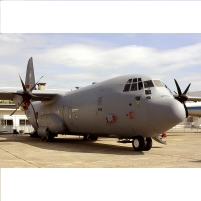The Champion of Going over Budget…Defense Department
Monday, April 16, 2012
 C130J (ohoto-aviationnews.eu)
C130J (ohoto-aviationnews.eu)
Every spring, the Government Accountability Office (GAO) gives critics of the Defense Department (DoD) a present, courtesy of Congress, in the form of a report on the state of the Pentagon’s major weapons programs. GAO’s report for 2011, released in March, concludes that despite some improvements, most of the programs that GAO examined in detail are not using wise procurement practices, such as matching “requirements and resources,” and ensuring the stability of weapons designs and the “maturity” of manufacturing processes. It predicted further cost increases and schedule slippages.
According to the report, the total estimated cost of DoD’s 2011 portfolio of 96 major defense programs (including 6 sub-programs) is $1.58 trillion. In 2011, their total acquisition costs grew by more than $74.4 billion (5%), of which about $31.1 billion (41.8%) can be attributed to contractor-caused factors such as inefficiencies in production.
Of the 102 programs and sub-programs, 74 (72.5%) have shown an increase in total acquisition cost from the first full estimate, while 24 programs (23.5%) have at least doubled in cost, 13 (12.7%) have at least tripled, and 5 programs (4.9%) have at least quadrupled in cost. All told, the major weapons programs are expected to cost $447 billion more than initially estimated.
As the report points out, although 60% of programs saw the costs of each unit go up last year, 52% of last year’s cost increases were incurred by a single program: the Joint Strike Fighter (JSF), the cost of which increased by $35 billion last year owing to what GAO called “manufacturing inefficiencies, parts shortages, and quality issues.” The JSF has been and will continue to be a money pit: The government has already sunk $70.6 billion into the JSF, which will need $256 billion more to reach completion, for a total cost of $326 billion, which is 52.8% higher than the initially estimated cost of $213 billion.
Other egregious examples include the DDG 51 destroyer, on which the government has spent $85 billion of a total expected cost of $101.8 billion (570% more costly than the initial estimate of $15.1 billion); Lockheed Martin’s C130J cargo plane, the total cost of which, at $15.4 billion, is 1,522% higher than the original estimate of $949 million; and the Virginia-class submarine, produced by General Dynamics and Northrop Grumman, on which DoD has spent $46.1 billion already and expects to spend another $37.7 billion, for a total cost of $83.8 billion, which is 38.5% more than originally pitched to the government.
For those wondering why the Pentagon is doing such a poor job containing cost overruns, the report notes that only 43% of major weapons programs have set required “affordability” targets.
-Matt Bewig
To Learn More:
Fun Facts about the Top 96 Pentagon Arms Programs (iWatchNews)
Defense Acquisitions: Assessments of Selected Weapon Programs (esp. pages 14, 172-177) (pdf)
- Top Stories
- Unusual News
- Where is the Money Going?
- Controversies
- U.S. and the World
- Appointments and Resignations
- Latest News
- Trump to Stop Deportations If…
- Trump Denounces World Series
- What If China Invaded the United States?
- Donald Trump Has a Mental Health Problem and It Has a Name
- Trump Goes on Renaming Frenzy






Comments